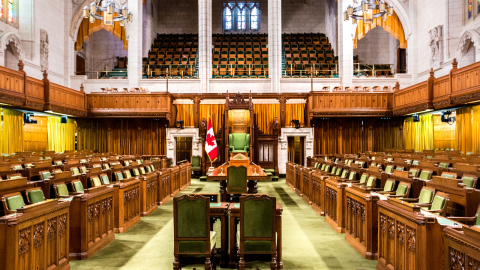
This article was originally published in the Hill Times.
Budget 2023 failed to acknowledge corporate profits in the affordability crisis. The failure is glaring as the Trudeau government made affordability a central message. They refuse to recognize that record corporate profits and Canadians’ financial pains are two sides of the same coin. That means that they did not provide suitable measures to deal with the issue.
What could it have done?
One obvious measure was an excess profits tax.
An excess profits tax would return to the government billions of public dollars used to support Canadians through the pandemic, fueling hope in government leadership to face multiple crises, including healthcare, housing, and the climate.
In 2021 the profit margin of Canadian companies skyrocketed. While profits rose, Canada’s largest companies actually pushed their tax rates lower, avoiding $30 billion in taxes. All of these large companies benefit from publicly-funded goods and services like high-quality education and reliable infrastructure. And some of them benefit more directly by accessing subsidies and tax credits.
By the end of 2021, the federal government had injected more than $475 billion extra dollars into the economy through pandemic support programs.[1] As the government tries to reduce inflationary pressures by removing money from the economy, it must look at where that money has gone, how it ended up there, and what is being done with it.
Where did pandemic support funds go?
Much of the government’s pandemic support spending passed through corporate hands. Many corporations collected CEWS, ostensibly to keep people attached to their jobs.[2] However, there were too few requirements for how the funds were to be used. Questions remain about whether the spending achieved its goal or simply bumped up corporate profits.
Even much of the money sent to individuals through CERB/CRB would have been passed along to corporations.[3] This is unavoidable since corporations control a lot of the goods and services that Canadians purchased with those funds—including basics like rent and groceries.
Every time a for-profit corporation gets hold of a dollar, they are compelled to siphon off as much profit as possible. In the decade before the pandemic, Canadian corporations claimed about eight cents of every dollar as pre-tax profit. In 2021, they claimed over 12 cents.[4] The largest corporations took almost 16 cents of every dollar.[5] Preliminary data indicates profit margins remained elevated through 2022.
While there were many factors in higher inflation, it was exacerbated by corporations hiking profit margins. Corporations took advantage of global turmoil and extraordinary government spending to achieve record profits. The $620 billion in pre-tax profits in 2021 easily beat the previous high.
What have corporations done with the money?
Among publicly-listed corporations, half of 2021 profits were distributed to owners as dividends and share buybacks. Just under a quarter were used to buy up other businesses. This increases corporate concentration and distributes money to the owners of the acquired businesses.
We are often told that corporate profits lead to investment. That did not happen in 2021. Net investment by the largest non-financial corporations was at its lowest level since 2003.[6] As a share of profits, it was at its lowest level on record.
Canadian corporations also paid their lowest income taxes as a share of profit since at least 1999. In the early-2010s, the effective tax rate was about 22%. Corporate tax avoidance pushed the tax rate lower through the rest of the decade before hitting its new low.
Some will reasonably ask, “What is a normal level of profit?” That should not stop us from acting. There are many practical ways to determine how much profit is “excess”. For example, if we based normal profits on pre-pandemic mark-ups over input cost, then excess profits in 2021 were $224 billion.[7] The federal government could have doubled its 2021/2 revenue from corporate income tax with a tax rate of just 35% applied only to the excess portion of corporate profits.
An excess profits tax would create fiscal space to alleviate the financial strain on Canadians through strategic investments such as more public housing. And it would more fairly distribute wealth. By failing to include measures in Budget 2023 to deal with corporate profits, the government has missed an opportunity to tackle the affordability crisis.
Dr. DT Cochrane is an economist and policy researcher with Canadians for Tax Fairness, a non-profit organization that advocates for fair progressive taxes to reduce inequality and strengthen the economy.
[1] This is based on data from the National Balance Sheet Accounts. Prior to the pandemic, federal government liabilities had been growing at about 2.2% per year. Liabilities peaked in Q4 of 2021 at $476.6 billion above trend.
[2] CEWS: Canada Emergency Wage Subsidy
[3] CERB: Canada Emergency Response Benefit; CRB: Canada Recovery Benefit
[4] StatCan table 33-10-0498-01: Balance sheet, income statement and taxation statistics with selected financial ratios, by total all industries
[5] This is based on analysis of publicly-listed companies, which includes the largest Canadian corporations.
[6] Net investment is capital expenditure less depreciation.
[7] Mark-up is a variation on profit margins. Profit is calculated as revenue less expenses. Profit margin has revenue in the denominator. Mark-up has expenses in the denominator.
